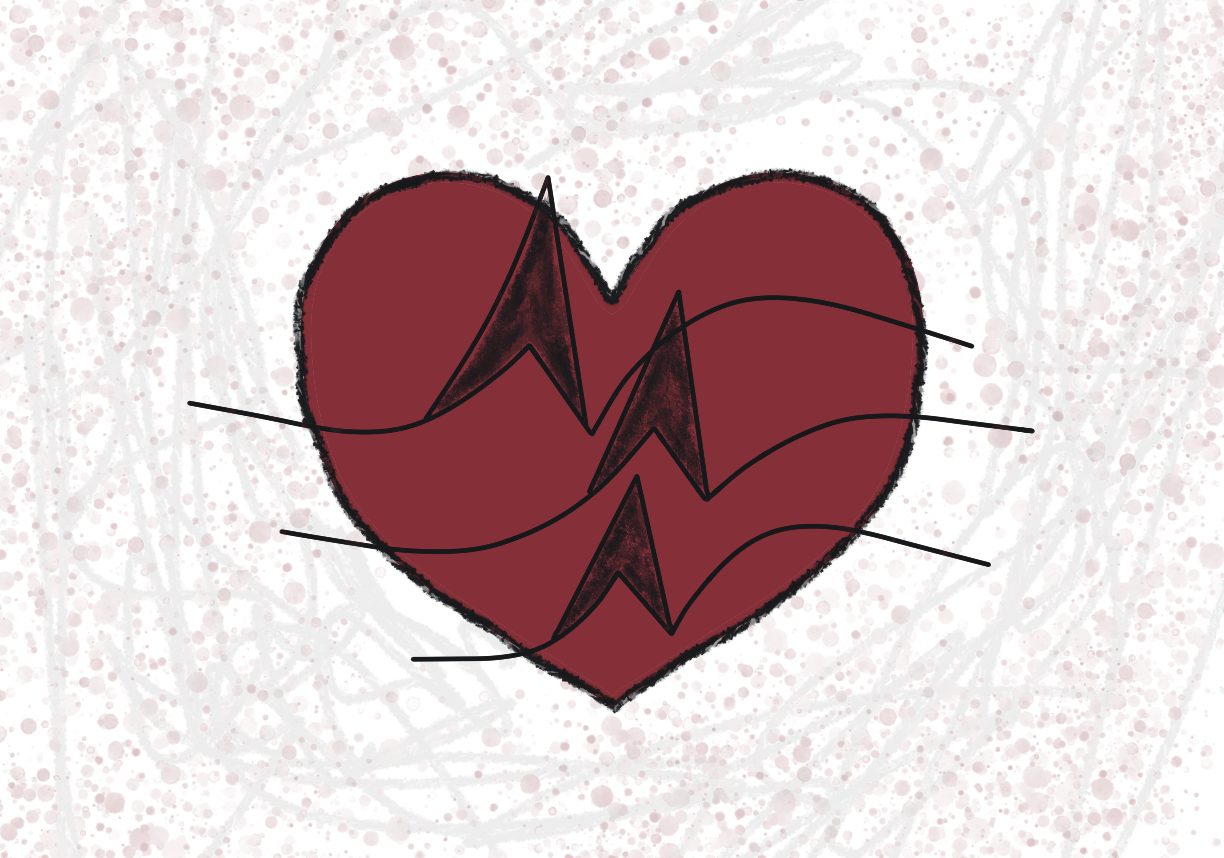It is often a blindsided relation to think; can iron levels cause heart palpitations? There is a common concept that iron levels affect blood volume, can cause anemia, etc. It is also as easy as a pie to think that iron level fluctuations can give rise to faintness, or drowsiness as anemic symptoms. However, it remains an out-of-field thought that can iron levels cause heart palpitations. So, yes. They can. Not so dominantly like many other definite causes of heart palpitations, but iron levels can contribute to heart palpitations. First, let’s discuss what are heart palpitations.
Heart Palpitations
Heart palpitations are the manifestation of a pounding or throbbing beat of the heart. An individual who experiences heart palpitations complains that something is beating too fast in a throbbing manner inside his chest. Heart palpitations and arrhythmias are related in their symptoms, but they have different causes and complications. Arrhythmias is a more serious condition in the realm of abnormal heartbeats. Arrhythmias can be a high heart rate or can be a low heart rate.
On the other side, heart palpitations are always overactive heartbeats. The heart beats too fast and misses the resting period between heart contractions. The underlying reasons behind heart palpitations are more behavioral than absolute pathological. Intense physical activity, walking or running for a long time, sudden stress, and some drug effects, can lead to heart palpitations. Besides, in this blog, we’ll discuss how iron level fluctuations can cause heart palpitations.
What Can Be the Reasons For Low Iron Levels?
Low iron levels, most of the time, are due to dietary insufficiency. People with a low iron diet are prone to iron deficiency. Besides the basic dietary factors, it is affirmable that internal body complications can also be the reason for low iron in the blood. In such scenarios, iron levels are low in the blood, not in the body. The intestines have iron, but due to some physiological malfunctioning, the body cannot make use of that iron. When going a little bit deeper into the explanation of such reasons, many factors come to the stage.
The stomach is responsible for making most of the inside iron from plant sources into the soluble form. The stomach assists this conversion by providing an acidic environment. The remaining insoluble iron is converted by the intestinal enzymes into the ferrous form. Problems arise when these enzymes or the channel proteins that take iron from the intestinal lumen through intestinal walls into the blood, become incapacitated of their role. As both enzymes and channel molecules are proteins, so genetic mutations or gene expression alterations affect their functioning.
There is also an out-of-the-blue reason for iron deficiency in the blood; ferrous ions deficiency. In this condition, the body has iron but not in the form of soluble ferrous ions. Receptors or channel proteins bind ferrous ions to transport them to the blood. Channel proteins can also bind ferric ions with them, but this is a less-occurring incident. The proteins present in the blood for iron attachment bind more favorably to the soluble ferrous ions due to their smaller size and good reactivity. Thus, it can also be the cause of low iron levels (functional, soluble iron) in the blood.
Despite these in-depth reasons, some reasons are very clear to discern. Heavy internal bleeding due to respective reasons is a cause of low iron levels in the blood. Heavy menstrual bleeding can also contribute to the loss of an appreciable quantity of blood iron, causing low iron levels.
2 Major Ways To Understand How Can Low Iron Levels Cause Heart Palpitations
The following is the explanation of 2 major ways in which iron level fluctuations can cause heart palpitations.
1. Low Iron Level and Cardiac Compensation
Low iron levels cannot be managed with the normal demand of hemoglobin synthesis. Reduction in hemoglobin levels make the blood volume less than normal. Low blood volume, indirectly due to low iron levels makes the heart overactive. In low blood volume conditions, the heart has to pump blood with fewer gaps in between in order to deliver the blood to all organs. Low blood volume can result in hypoperfusion. To avoid hypoperfusion and oxygen deficiency, the heart beats fast and fats to meet the blood demand of cells and tissues.
This overactivity of the heart makes it a throbbing organ, with less resting time between heartbeats. This is the cause of heart palpitations but not regularly. Prolonged low iron levels can stimulate heart palpitations which would be more critical than regular heart palpitations. Heart palpitations have other definite reasons which have more contribute to the commencement of heart palpitations.
A study published in The Texas Heart Institute Journal reveal the interrelationship of low iron levels and cardiac overload.
3. Low Iron Levels Effects on Arrhythmic Progression
The influence of low iron levels on the progression of arrhythmia symptoms is still under research. Recent studies have discovered the relationship between iron level changes and abnormal heartbeats. Iron impacts the heart’s activity by interfering with the other electrolytes in the cardiac muscle cells. The following is the explanation of how iron level changes can make the heart beat too fast or too slow. Iron can influence heartbeats in many other ways too. This explanation only makes the impact of iron on ion channels understood.
Iron Interference With Ion Channels
Iron interference with ion channels is the most digestible concept of how can low iron levels cause heart palpitations. Rhythmic contractions of heart muscles require the normal movements of sodium, potassium, calcium, and magnesium in and out of cells. Sodium and calcium are more prominent in activating heart contractions while potassium maintains the interval gaps between heartbeats. Irregular flow of these ions in and out of the cardiac muscle cells gives rise to heart palpitations or more severe arrhythmias. Iron interferes with the ionic channels that monitor their movements. Normal iron levels maintain the rhythmic influx and efflux of these ions and low iron levels can cause instability.
A study published in Pacing and Clinical Electrophysiology 2023 shows how impaired iron metabolism lead to arrhythmias by interfering with calcium handling, ion channeling ,etc.
Low Iron Levels and More Chances of Oxidative Damage
Oxidative damage occurs when free radicals become high in concentration or the antioxidant molecules become low. Low iron levels catalyze both opportunities. Trace amounts of iron cause the production of free radicals by the Fenton reaction and inadequate iron levels also fail to stabilize vital antioxidant enzymes. Enzymes with antioxidant properties i.e., superoxide dismutase, catalase, and peroxidases show reluctant behavior in iron deficiency. These active antioxidizing enzymes mostly need iron in the form of heme iron. Heme contains ferrous ions in the center for structural organization. Specific deficiency of ferrous ions impairs the functioning of such enzymes.
Moreover, mitochondria hold the reigns of ROS (reactive oxygen species) production and their detoxification. Mitochondria is the spotlight in the production of ATP. During the electron transport chain (ETC) step of ATP production, electron leakage becomes the cause of free radicals production. This production, in turn, catalyzes the production of more free radicals, such as superoxides, hydrogen peroxide, and hydroxyl radicals. Iron, in the form of heme iron, checks this whole activity.
Deficiency in iron levels impairs ATP production and results in more leakage of free electrons. These free electrons upset the production of ROS within mitochondria. Another factor leading to the increment in the production of ROS is hyper regulation of gene expression that governs ROS production. Low oxygen levels as a consequence of low iron levels trigger the hypoxic mechanisms. Hypoxia occurs in oxygen deficiency situations such as at high altitudes. This condition activates hypoxia-inducible factor 1, which has a mysterious role in enhancing the production of ROS.

How ROS Affect Ion Channel Proteins That Results in Heart Palpitations?
Oxidative stress impacts the guarding properties of ion channels in the cardiac muscle cells. Abnormalities in these ion channels disrupt the cardiac rhythmic activity, especially when there are disruptions in potassium and calcium channels. There are a number of ways oxidative stress remodels the ion channels functioning. Out of these ways, changes in protein structure, disulfide bond breakage, and phosphorylation of specific regions of channeling proteins are the most preeminent ones.
Reactive oxygen species can directly attack the amino acids of channeling proteins, causing alternations in their structure. Channeling proteins contain disulfide bonds at various sites and reactive oxygen species can break disulfide bonds by attacking sulfhydryl bond cleavage.
Such modulations affect the timing and concentration of ions across these channels. Discussing timings points to the delay in closing or opening of gates. If there is a delay in the opening of sodium gates or closure of potassium gates due to abnormal phosphorylation of specific regions of channel proteins, it leads to changes in heart rhythms. Interruptions with the potassium gates potentially lead to arrhythmias as potassium maintains the resting period between heartbeats. All of this information has a goal to make the readers understand how can low iron levels cause heart palpitations.
Conclusion
Concluding the above all information in simple and easy words about how can low iron levels cause heart palpitations is not so confusing. Low iron levels can trigger the formation of reactive molecules by multiple phenomena. High levels of reactive species tilt the balance of oxidative activity. This, in turn, affects the channel proteins that control the entry and exit of important electrolytes for heart activity. Alternations in the sodium, calcium, and potassium levels affect the heart’s normal beating and give rise to heart palpitations, which in more severe forms can become arrhythmias. Arrhythmias have definite medical reasons and underlying causes, unlike heart palpitations which is a general and rather mild sensation.




